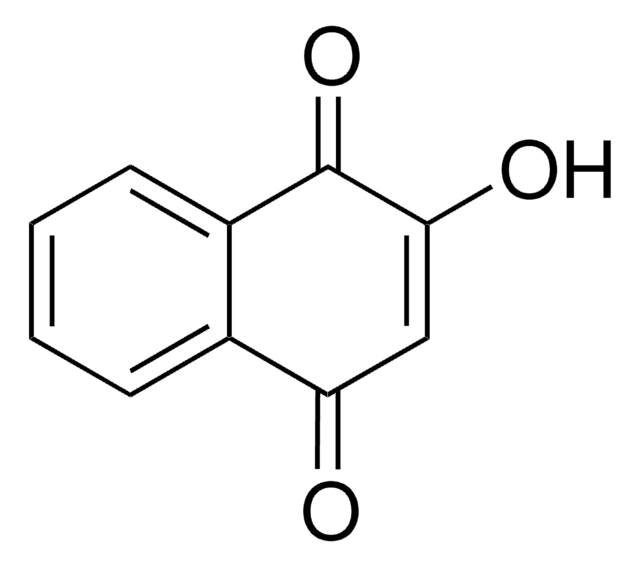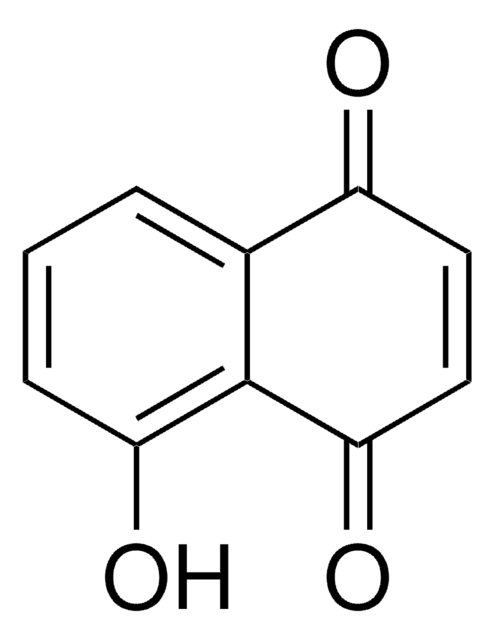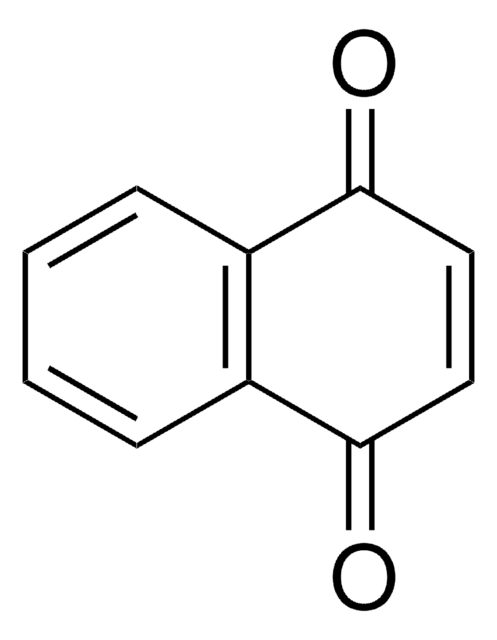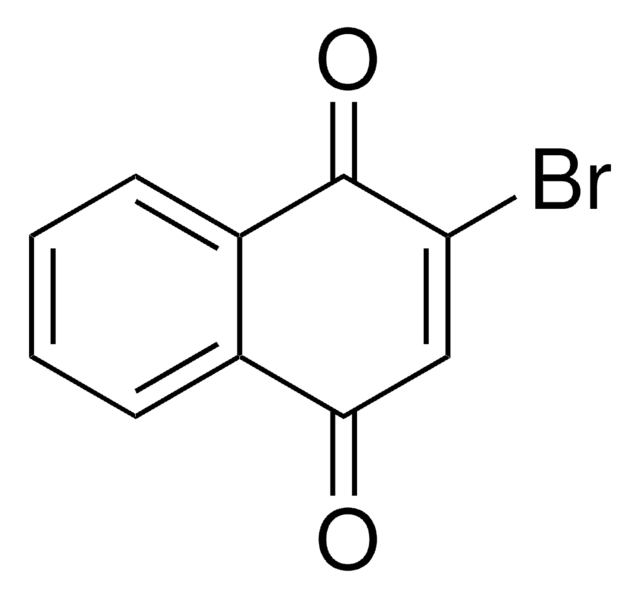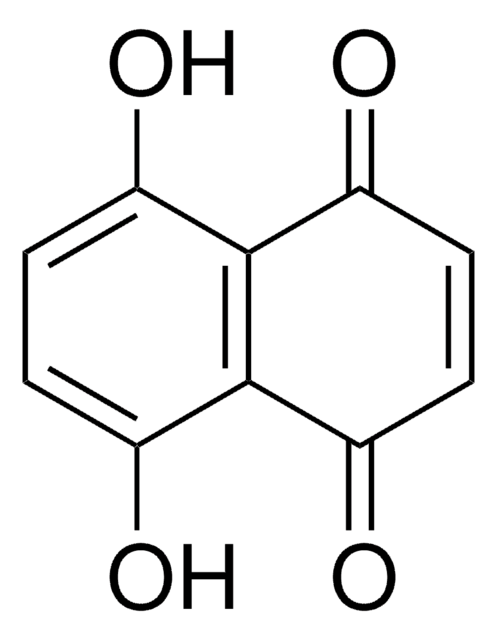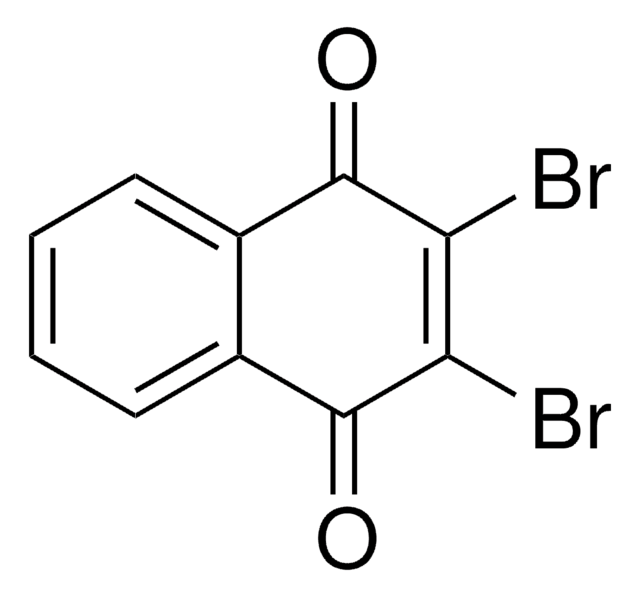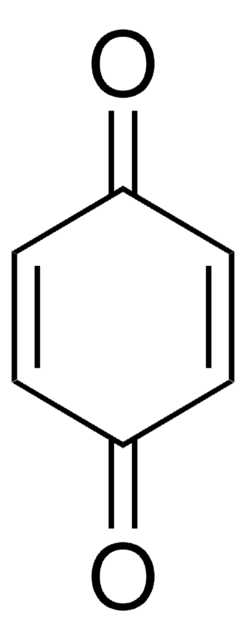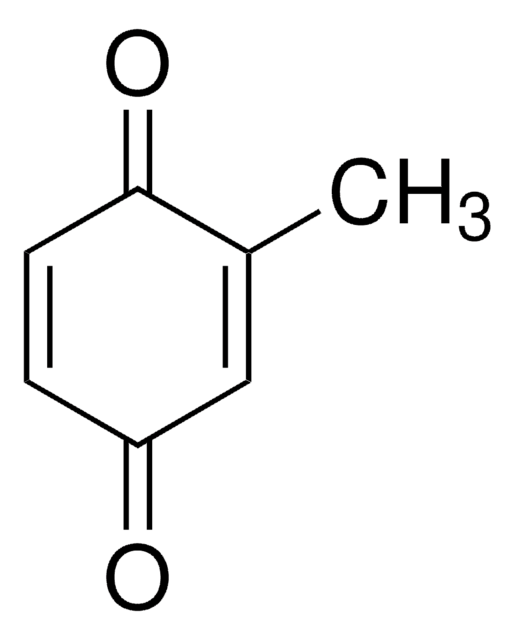All Photos(1)
About This Item
Empirical Formula (Hill Notation):
C11H8O3
CAS Number:
Molecular Weight:
188.18
MDL number:
UNSPSC Code:
12352100
PubChem Substance ID:
NACRES:
NA.22
Recommended Products
assay
98%
mp
184-187 °C (lit.)
functional group
ether
ketone
SMILES string
COC1=CC(=O)c2ccccc2C1=O
InChI
1S/C11H8O3/c1-14-10-6-9(12)7-4-2-3-5-8(7)11(10)13/h2-6H,1H3
InChI key
OBGBGHKYJAOXRR-UHFFFAOYSA-N
Related Categories
General description
2-Methoxy-1,4-naphthoquinone is a potential candidate for Helicobacter pylori infection related disease therapy. It is isolated from the leaves of Impatiens glandulifera.
Application
2-Methoxy-1,4-naphthoquinone was used in the preparation of 2-(4-X-phenylene)amine-1,4-naphthoquinones (X= ferrocenyl, OMe, Me, I, Cl and NO2).
signalword
Warning
hcodes
Hazard Classifications
Eye Irrit. 2 - Skin Irrit. 2 - STOT SE 3
target_organs
Respiratory system
Storage Class
11 - Combustible Solids
wgk_germany
WGK 3
flash_point_f
Not applicable
flash_point_c
Not applicable
ppe
dust mask type N95 (US), Eyeshields, Gloves
Choose from one of the most recent versions:
Certificates of Analysis (COA)
Lot/Batch Number
Don't see the Right Version?
If you require a particular version, you can look up a specific certificate by the Lot or Batch number.
Already Own This Product?
Find documentation for the products that you have recently purchased in the Document Library.
Customers Also Viewed
Yuan-Chuen Wang et al.
Fitoterapia, 83(8), 1336-1344 (2012-04-21)
2-Methoxy-1,4-naphthoquinone (MeONQ) from Impatiens balsamina L. exhibited strong anti-H. pylori activity in our previous study. In this study, we investigated the cytotoxicity of MeONQ against gastric adenocarcinoma (MKN45 cell line) and propose the relevant mechanisms. MeONQ resulted in serious necrosis
X Yang et al.
Phytotherapy research : PTR, 15(8), 676-680 (2001-12-18)
By using brine shrimp (Artemia salina) lethality test-guided fractionation, a single bioactive compound (LC(50)=26 ppm) was isolated from the 95% ethanol extract of the dried aerial parts of Impatiens balsamina L. and subsequently identified as 2-methoxy-1,4-naphthoquinone (MNQ). The structure of
Naomi Mori et al.
Journal of natural medicines, 65(1), 234-236 (2010-10-05)
A screening study using a luciferase assay to identify natural products which inhibit Wnt signaling was carried out. The bioassay-guided fractionation of aerial parts of a plant, Impatiens balsamina, led to the isolation of 2-methoxy-1,4-naphthoquinone (1) as an active compound.
S Rodriguez et al.
Planta medica, 61(4), 362-364 (1995-08-01)
A chemical and biological screening of 25 species of the Gentianaceae family has been undertaken. Both methanolic and dichloromethane extracts of Swertia calycina exhibited a strong antifungal activity against Cladosporium cucumerinum and Candida albicans. The compound responsible for this activity
M Chen et al.
Scientific reports, 10(1), 951-951 (2020-01-24)
Olfactory ensheathing cells (OECs) are crucial for promoting the regeneration of the primary olfactory nervous system that occurs throughout life. Transplantation of OECs has emerged as a promising therapy for nervous system injuries, in particular for spinal cord injury repair.
Our team of scientists has experience in all areas of research including Life Science, Material Science, Chemical Synthesis, Chromatography, Analytical and many others.
Contact Technical Service